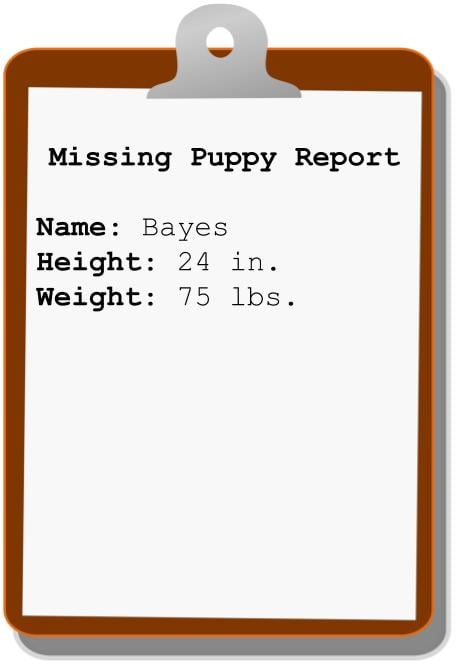Creating variables
Introduction to Data Science in Python

Hillary Green-Lerman
Lead Data Scientist, Looker
Filing a missing puppy report

name = "Bayes"
height = 24
weight = 75.5
Rules for variable names
- Must start with a letter (usually lowercase)
- After first letter, can use letters/numbers/underscores
- No spaces or special characters
- Case sensitive (
my_varis different fromMY_VAR)
# Valid Variables
bayes_weight
b
bayes42
# Invalid Variables
bayes-height
bayes!
42bayes
Error messages
bayes-height = 3
File "<stdin>", line 1
bayes-height = 3
^
SyntaxError: can't assign to operator
Floats and strings
float: represents an integer or decimal number
height = 24 weight = 75.5string: represents text; can contain letters, numbers, spaces, and special characters
name = 'Bayes' breed = "Golden Retriever"
Common string mistakes
- Without quotes, you'll get a name error.
owner = DataCamp
File "<stdin>", line 1, in <module>
owner = DataCamp
NameError: name 'DataCamp' is not defined
- If you use different quotation marks, you'll get a syntax error.
fur_color = "blonde'
File "<stdin>", line 1
fur_color = "blonde'
^
SyntaxError: EOL while scanning string literal
Displaying variables
name = "Bayes"
height = 24
weight = 75
print(height)
24
Let's practice!
Introduction to Data Science in Python

